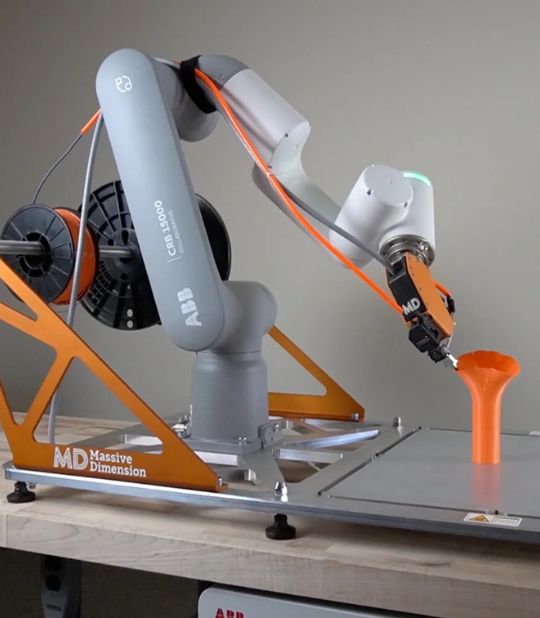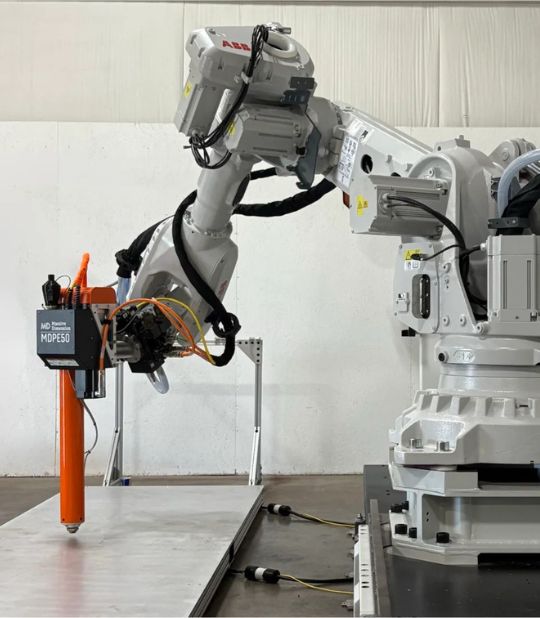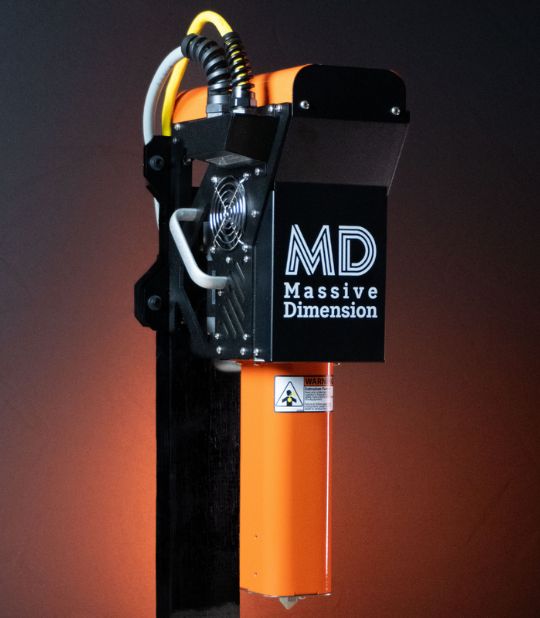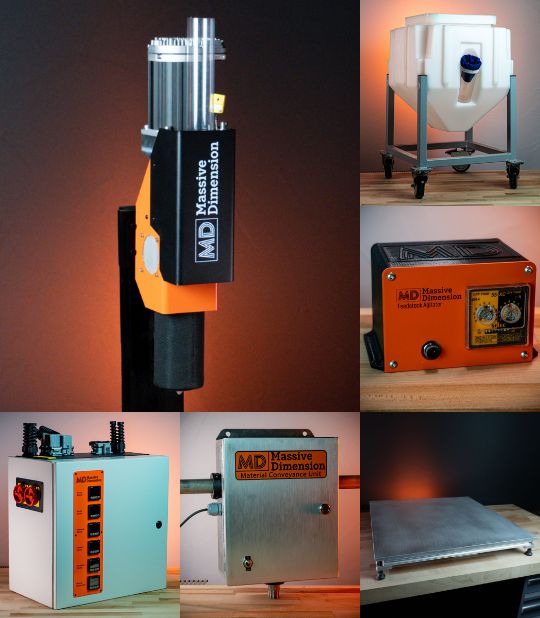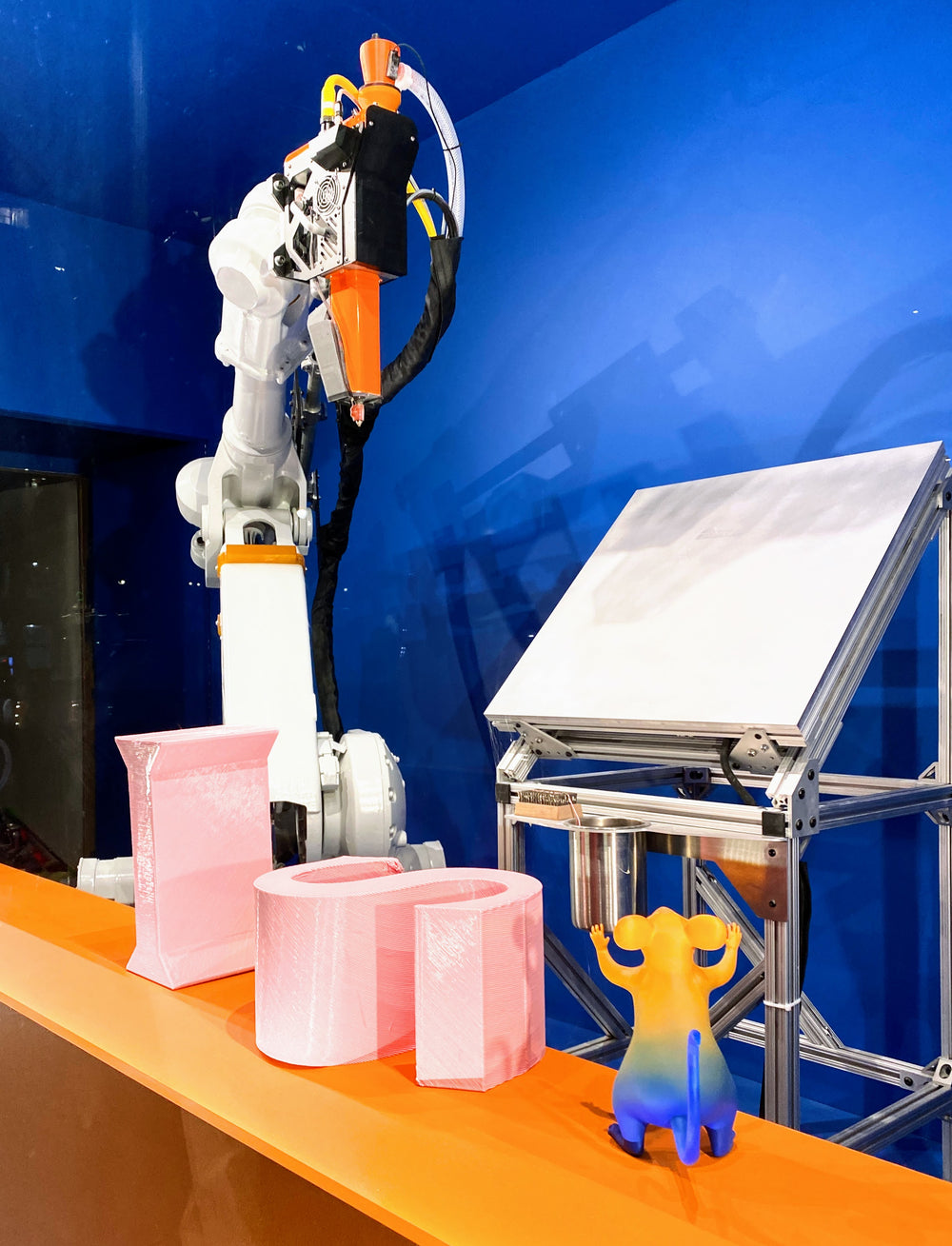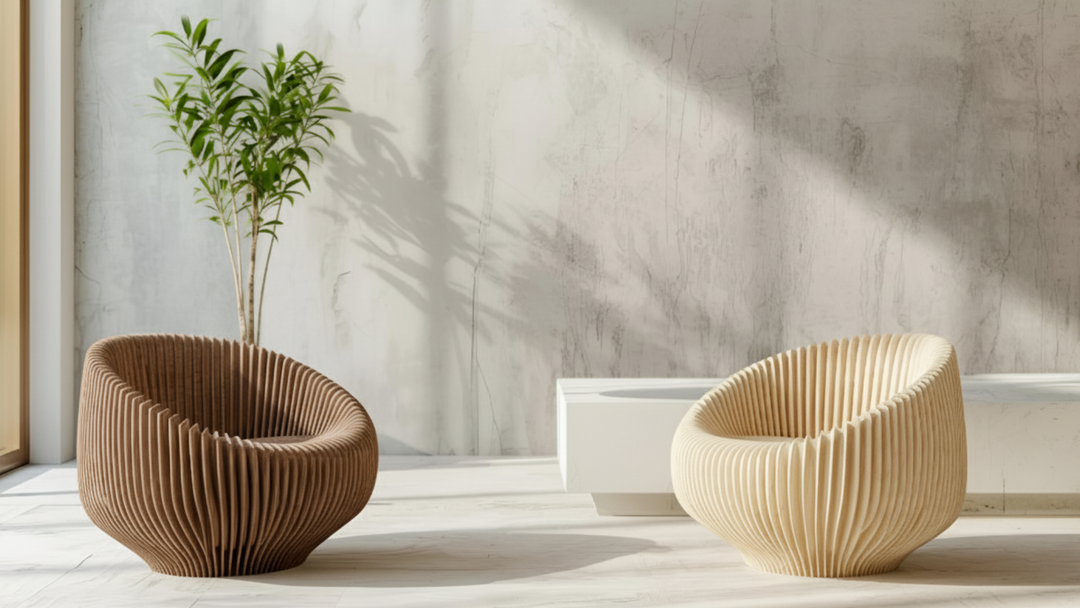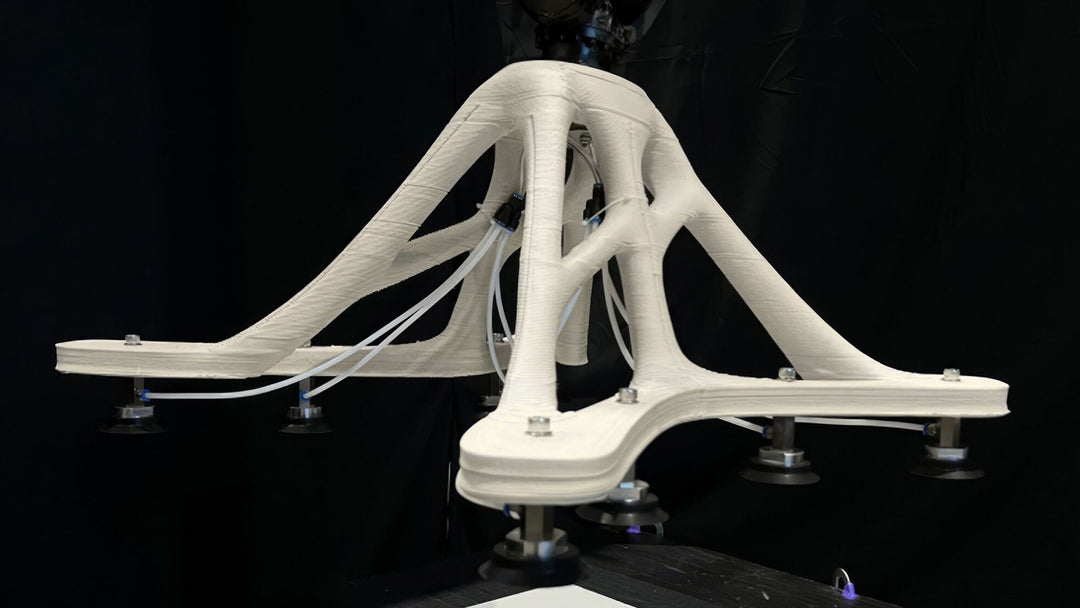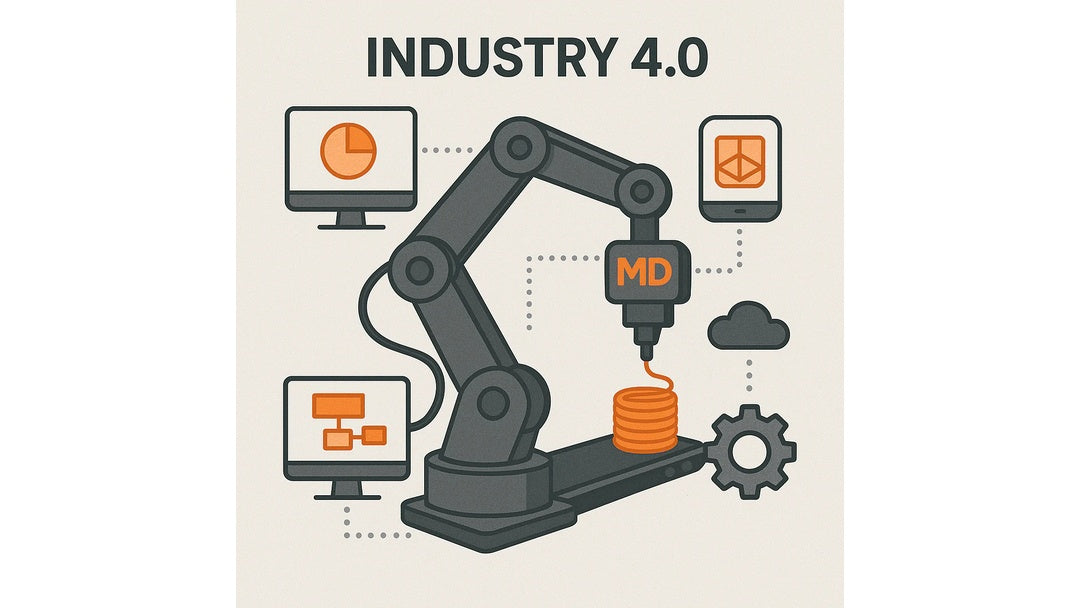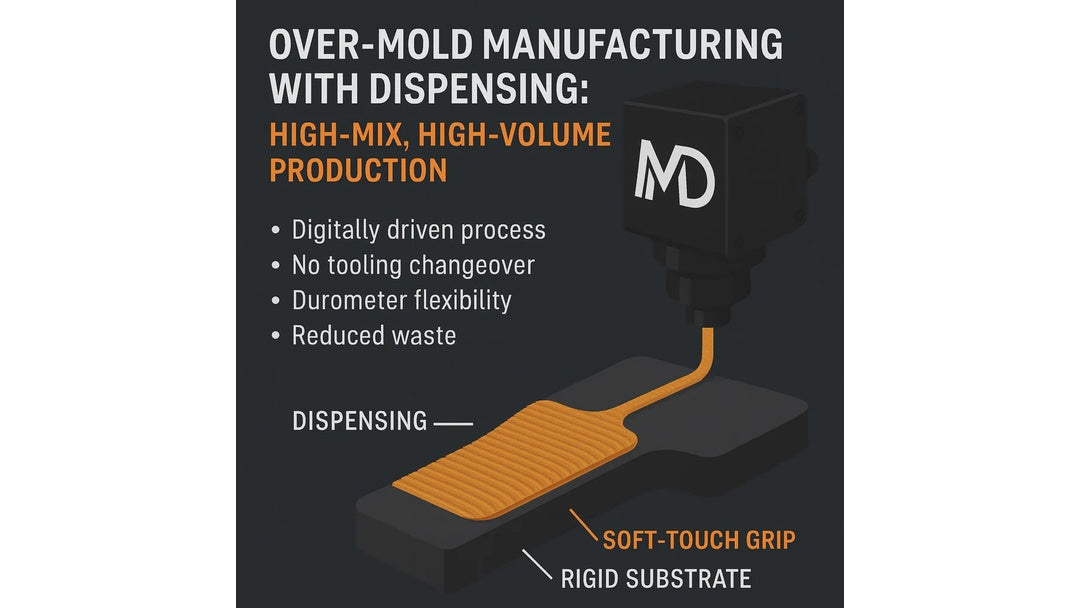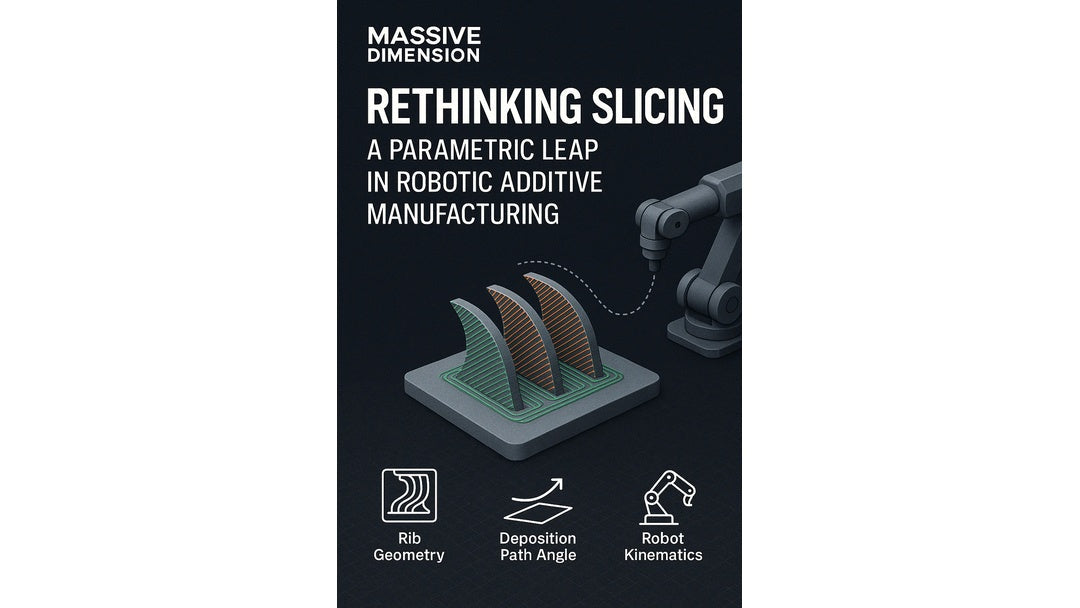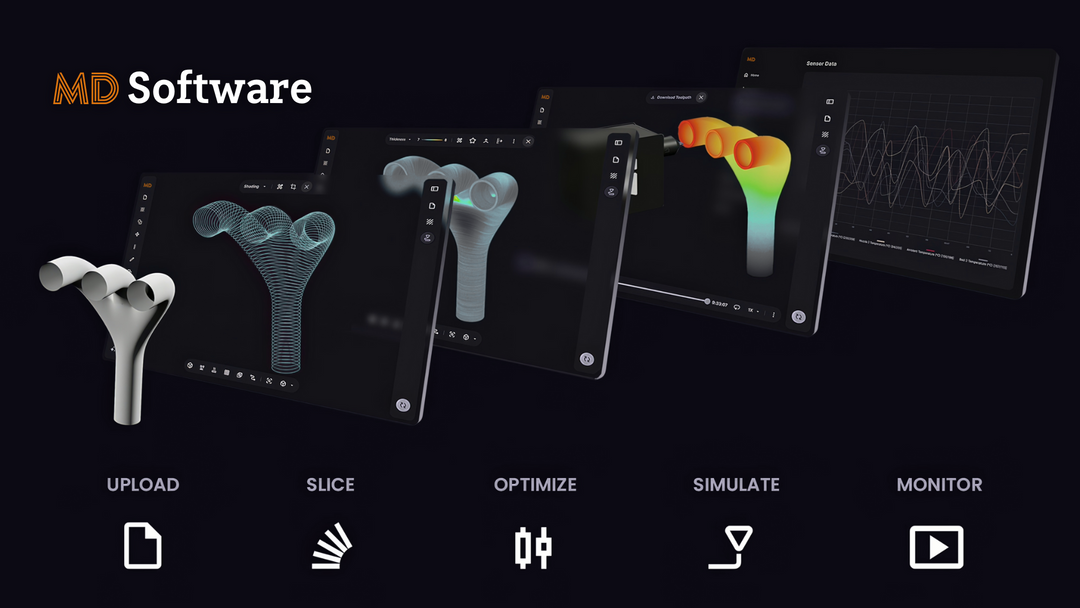Choosing Plastic Pellets that Feel Like Wood, Glass, Metal & More
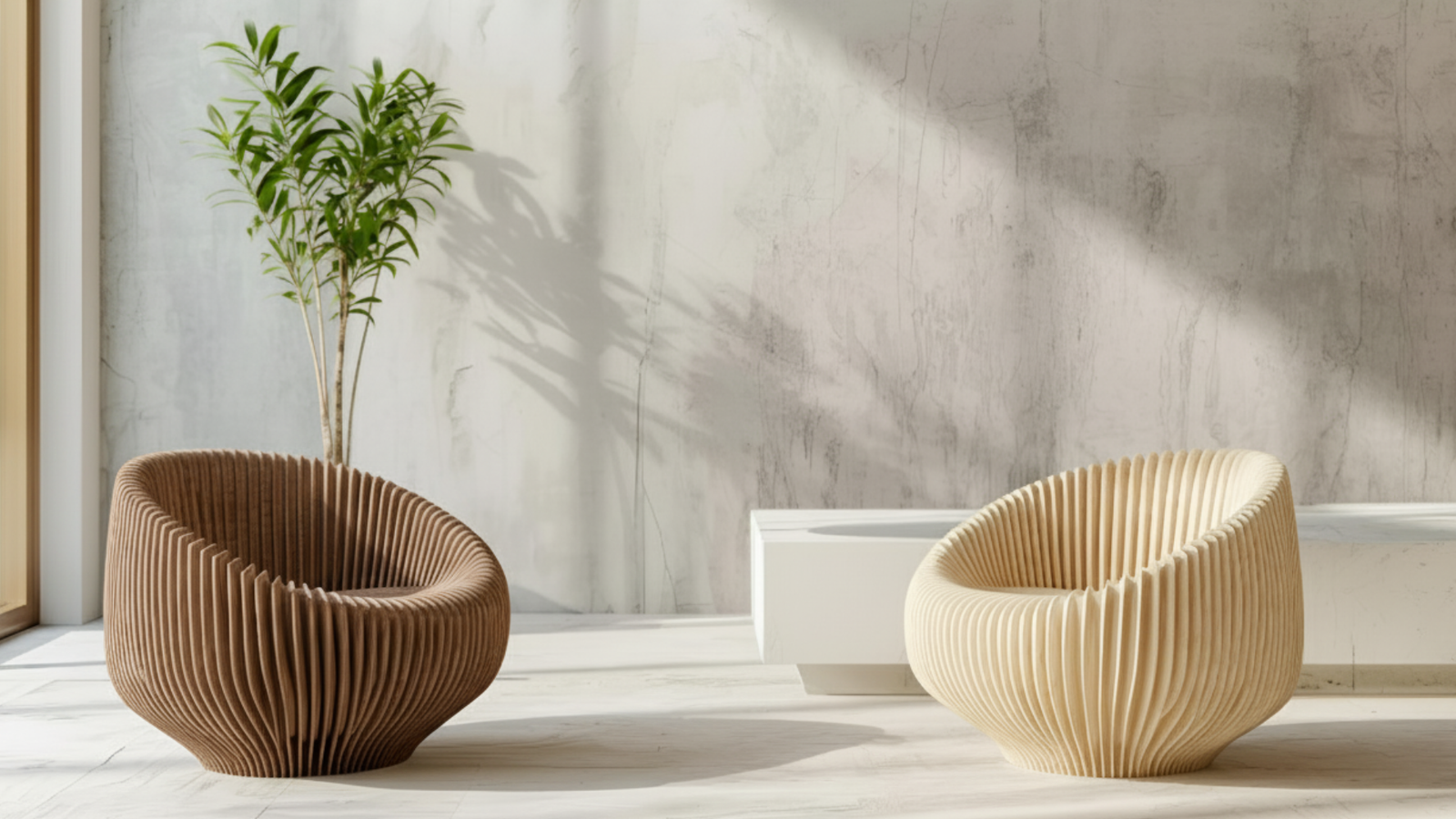
Why pellet printing for furniture & décor?
Pellet extrusion turns industrial-grade polymers and composites into large, beautiful parts fast—perfect for tables, chairs, lighting, wall art, and architectural elements. With the right material, you can evoke the warmth of wood, the gleam of metal, or the glow of glass, while gaining design freedom and durability that traditional fabrication can’t match.
If you’re gearing up for pellet printing, start with a capable print head like the MDPH2 pellet extruder or step up to the MDPE10 / MDPE50 for higher flow. Browse all pellet extruders.
What this guide covers
- Which pellet materials best mimic traditional materials
- Design & print tips to nail the tactile experience
- Finishing workflows to match the look and feel
- Bio-enhanced options that add sustainability without sacrificing performance
Safety first for lighting: for lamp bodies, shades, and sconces, prefer heat-resistant polymers and use LED light sources. Ensure ventilation paths around drivers/LED boards and follow local electrical codes.
Wood, without a woodshop
1) Wood-fiber reinforced PLA / PP / PETG
Look & feel: Natural matte, visible wood speckle, warm-touch surface that sands like a softwood. Great for furniture frames, panels, sculptural legs, handles.
Why pellets: Consistent fiber loading and color, cost efficiency for large parts.
Design cues: Use rounded fillets and grain-like surface textures in the model. Add 0.8–1.4 mm layer heights and 3–5 perimeters for a “laminated” visual that reads like glued staves.
Print notes: Moderate temps; avoid extreme regrind ratios to preserve surface quality. Dry pellets for best finish—see the MD Pellet Drying System.
Finishing: Sand progressively (120→320), then wipe-on oil (e.g., tung or linseed) or water-borne polyurethane for a satin furniture sheen. For darker “walnut,” use pigment-toned clear coats.
Sustainability angle: Uses renewable fillers; can incorporate biocarbon or agricultural residues (rice hulls, flax shives) for deeper tone and stiffness.
2) Biocarbon-filled PP / PA Composites
Look & feel: Charcoal-black, open-pore matte reminiscent of ebonized oak or charred cedar (shou sugi ban). Warm to the touch.
Design cues: Faceted geometries, chamfers, and carved details pop after a light Scotch-Brite buff.
Finishing: Light sanding only; seal with a matte polyurethane to keep the deep black.
Bonus: Excellent dimensional stability; lower squeak than neat plastics on contact surfaces.
Material starting points: PP + Carbon Fiber pellets or Recycled PP/PE + Carbon Fiber.
Glass and other luminous looks
3) Optical PETG / Copolyesters (translucent) & PMMA (clear)
Look & feel: From frosted to near-clear. Perfect for lamp shades, diffusers, and light sculptures.
Design cues: Use single-wall vase modes, thin shells (1–2 mm), and hex/gyroid infills behind thin skins for tailored diffusion. Consider wave or rib textures to blur LED hotspots.
Print notes: Dry thoroughly for clarity. Reduce cooling to minimize chill haze; print slow for layer fusion.
Finishing: Wet sand (600→2000) then plastic polish; flame or vapor polish applicable on certain chemistries—test first. Clear coats (acrylic) lock in transparency.
Material aisle: Explore materials & pellets.
4) Silica-look with Mineral-filled PP / PETG
Look & feel: Stone-frost or opal glass. Soft, chalky translucency ideal for sconces and pendant bowls.
Design cues: Thicker walls (2.5–5 mm) with soft blends and large radii read like cast glass.
Finishing: Scotch-Brite matte; optional satin clear to deepen the opal effect.
Material aisle: Explore materials & pellets.
Metal, minus the foundry
Health & safety note on ABS
When heated, ABS can emit volatile organic compounds (including styrene) and ultrafine particles. If you print with ABS or ABS blends, use an enclosed printer with local exhaust vented outdoors and/or an enclosure with HEPA (particles) plus activated carbon (VOCs). Avoid printing in occupied living spaces; follow the material SDS and local codes.
5) Metal-powder filled PLA / PETG / ABS (bronze, copper, steel looks)
Look & feel: Real metallic sparkle, cool-to-the-eye sheen. Great for hardware, pulls, trim, inlay bands, lamp caps.
Design cues: Chamfers and fillets catch light like machined edges. Add micro-knurl or bead details.
Print notes: Heavier pellets; ensure robust drive. A hardened screw/barrel is recommended over time for high-abrasive loads.
Finishing: Wet sand + metal polish to bring out true luster; optional cold-patina solutions for aged bronze/copper effects. Clear-coat to prevent tarnish.
Hardware: Choose a high-flow head like MDPE10 or MDPE50 for dense fills.
6) Conductive & plate-ready ABS / PC blends
Look & feel: Base polymer that accepts electroless copper/nickel for real metal skins.
Workflow: Print, surface prep, electroless plate, then optional electroplating for thicker coats. Results feel and age like metal—ideal for premium knobs, lamp stands, and brackets.
Stone, ceramic, and concrete vibes
7) Mineral-filled PP / PLA / PETG (calcium carbonate, talc, mica)
Look & feel: Ceramicky, dense, and pleasantly cool touch. Natural speckle resembles cast stone or unglazed ceramic.
Design cues: Soft geometry with shallow dishes, trays, lamp bases. Add subtle surface noise in CAD to mimic hand-cast texture.
Finishing: 180→400 grit sand; matte acrylic clear keeps the stone read. Lime-wash paints produce mineral realism on top.
Materials: See the materials collection.
8) Micro-aggregate PETG / PP “concrete” blends
Look & feel: Fine-aggregate concrete with authentic porosity.
Design cues: Sharp fillets and ribbed shells like cast-in formwork. Highlight with color washes and dry-brushed lighter tones.
Performance: Good compressive feel for table bases and plinths.
Leather, cork, and textile feels
9) Flexible TPU/TPE with Cork or Bio-Fillers
Look & feel: Warm, low-gloss, slightly compressible—evokes cork or saddle-leather tactility for grips, edge-bumpers, tray inserts.
Design cues: Add stitched-seam reliefs and grain emboss in the model. Co-print with rigid shells for hybrid comfort parts.
Finishing: Light Scotch-Brite; beeswax-style conditioners for richer hand.
10) Flax/cellulose-reinforced PLA / PP
Look & feel: Woven-fiber vibe with a subtle linen visual. Great for lampshades, acoustic baffles, and panels.
Finishing: Clear matte to preserve the natural weave appearance; perforation patterns enhance acoustic absorption.
Bio-enhanced & circular options worth exploring
- Lignin-rich wood biocomposites: deeper natural tone, higher bio-content.
- Biocarbon (pyrolyzed biomass) in PP/PA: low-gloss black, improved stiffness, carbon-negative potential.
- Algae or seaweed-derived biopolymers: earthy hues; pair with mineral fillers for better stiffness.
- Castor-oil bio-PA11/PA1010: excellent toughness, good heat performance—great for durable furniture joints.
- Recycled streams (rPETG, rPP, ocean plastics): authentic material story; test for color/viscosity variability with multi-lot blending.
Starter kit: the Thermoplastic Sampler Pack makes dialing in faster.
Design & print recipes (quick-start)
“Walnut” Side Table Base
- Material: Wood-filled PLA or biocarbon-PP
- Layer height: 0.8–1.2 mm
- Walls: 4–6 perimeters
- Infill: 10–18% gyroid
- Finish: Sand 120→320; oil + satin poly.
Opal Pendant Shade
- Material: Mineral-filled PETG (opal) or translucent PETG
- Shell: 1.5–3.0 mm uniform wall
- Pattern: Internal gyroid 5–8% for diffusion
- Finish: Scotch-Brite matte; optional satin clear.
Bronze-Look Drawer Pulls
- Material: Bronze-filled PLA/PETG
- Walls: 6+ perimeters; 30–60% infill
- Finish: Wet sand + metal polish; clear-coat.
Hardware: Consider the MDPH2 for fine nozzles and detail.
Concrete Plinth
- Material: Mineral/micro-aggregate PETG
- Layer height: 1.0–1.4 mm
- Finish: Light sand; lime-wash glaze.
Soft-Touch Desk Edge
- Material: Cork-filled TPU
- Shore hardness: 85–95A
- Finish: Light buff; beeswax wipe.
Finishing toolbox
- Sanding: 120→400 (wood/stone looks), 600→2000 (glass/metal looks).
- Sealers & clears: Water-borne polyurethane (matte/satin), acrylic clears for luminous parts, oil finishes for wood-filled.
- Surface activation: Primer surfacers for paint; adhesion promoters for plating workflows.
- Coloring: Alcohol dyes or universal tints in clear coats; dry-brush highlights on stone/concrete.
- Joining: Threaded inserts, pinned mortise-tenon joints in polymer, solvent or structural adhesives depending on chemistry.
Pro tips for furniture-grade results
- Dry your pellets—clarity, strength, and finish depend on it. See Pellet Drying Systems.
- Tune bead width to the story you want: coarse for a hand-built, laminated aesthetic; fine for glass/metal illusions.
- Texture beats paint: Model micro-textures to catch light like grain, knurl, or ceramic skin.
- Design for maintenance: replaceable wear pads, removable shades, and accessible wireways in lighting.
- Test panels first: small coupons to lock finish sequences before committing to big prints.
- Scale up smart: For uninterrupted runs, add a Material Conveyance Unit (MDMCU) and optional bulk bin.
Where Massive Dimension fits
Massive Dimension pellet print heads excel at large, fast, material-agnostic fabrication. Whether you’re after charred-oak vibes, cast-glass glow, or bronze glint, the right pellet and finish unlocks it. Explore extruders, materials, and material handling to build a reliable furniture & décor workflow.
Handy product roundup
- Print heads: MDPH2, MDPE10, MDPE50
- Drying: Pellet Drying System, XL Pellet Drying System
- Materials: PP + Carbon Fiber, Recycled PP/PE + CF, Thermoplastic Sampler Pack
- Handling: MDMCU Material Conveyance Unit, Bulk Pellet Storage Bin
